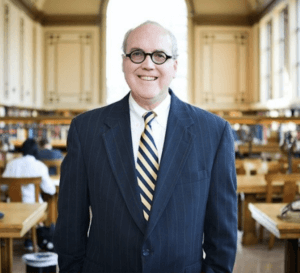The Institute for Global Understanding (IGU) co-hosted the Global Ocean Governance Lecture Series on October 12 featuring Dr. Wil Burns, co-executive director of the Institute for Carbon Removal Law and Policy at American University. The virtual event had more than 100 registered attendees.
 Dr. Wil Burns focused on three major topics: types of climate geoengineering, cutting edge and important initiatives, and international governance of climate geoengineering initiatives. Dr. Wil Burns began by referencing the Paris agreement, which entered into force on 2016 and seeks to hold global temperature increase well below 2 degrees Celsius and preferably at 1.5 degree Celsius. He expresses concerns that temperatures will continue to rise for centuries and such warming could be disastrous to humans as well as ecosystems. If temperatures rise about 3 degrees Celsius it could result in the melting of the Greenland ice sheet, which would raise sea-level by 7 meters. This would also destroy all of the coral reefs in the world, which host approximately 1/3 of all ocean species. These specters of climate change impacts of this magnitude have prompted consideration of potential interventions that could buy humanity more time. These interventions are known as Climate Geoengineering.
Dr. Wil Burns focused on three major topics: types of climate geoengineering, cutting edge and important initiatives, and international governance of climate geoengineering initiatives. Dr. Wil Burns began by referencing the Paris agreement, which entered into force on 2016 and seeks to hold global temperature increase well below 2 degrees Celsius and preferably at 1.5 degree Celsius. He expresses concerns that temperatures will continue to rise for centuries and such warming could be disastrous to humans as well as ecosystems. If temperatures rise about 3 degrees Celsius it could result in the melting of the Greenland ice sheet, which would raise sea-level by 7 meters. This would also destroy all of the coral reefs in the world, which host approximately 1/3 of all ocean species. These specters of climate change impacts of this magnitude have prompted consideration of potential interventions that could buy humanity more time. These interventions are known as Climate Geoengineering.
“Geoengineering is the deliberate large-scale intervention in the Earth’s natural systems to counteract climate change” – Oxford Geoengineering Program
Dr. Burns discussed the two categories of geoengineering: solar radiation management (SRM) and carbon dioxide removal (CDR). SRM reflects a small portion of the Sun’s energy back into space and CDR aims to remove and sequester carbon dioxide from the atmosphere. Dr. Burns also discussed the benefits and risks of social radiation management marine geoengineering options, carbon dioxide removal geoengineering options and, governance options for marine geoengineering at an international level. Some SRM options include: marine, cloud brightening, microbubbles/foam. The CDR options include ocean iron fertilization, ocean alkalinity enhancement and artificial upwelling. Dr. Burns also discussed two international treaty regimes that seek to regulate marine geoengineering research: The London Dumping Convention in 1972 and the Convention on Biological diversity. Dr. Burns concluded the lecture by discussing the Paris Agreement preamble.
“Given our inability at this point or lack of commitment to reduce our emissions to the point that are necessary to meet the Paris Agreement that we need to consider some of the geoengineering options. It will be critical for society to assess the tradeoffs that may occur and to try to put governance mechanisms in place that help us to ensure that if these approaches are deployed they are done in a way that are environmentally optimal and also considers issues of equity and social justice” – Dr. Wil Burns
A video recording of the lecture, along with the slides, is available here:
